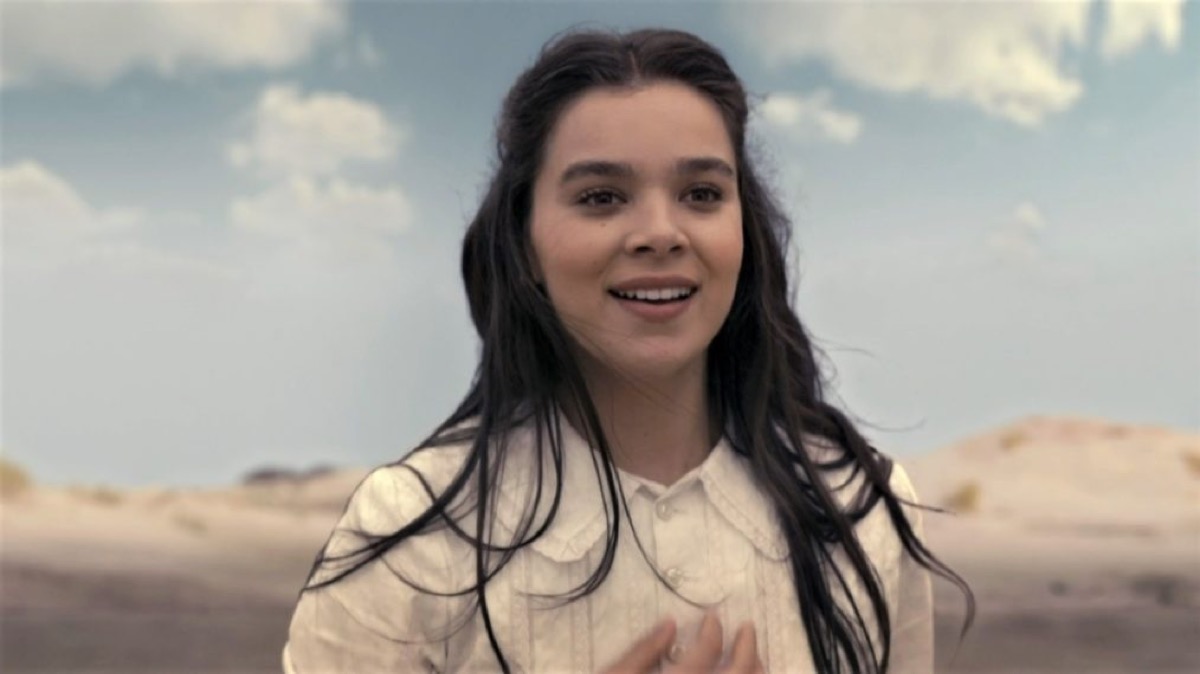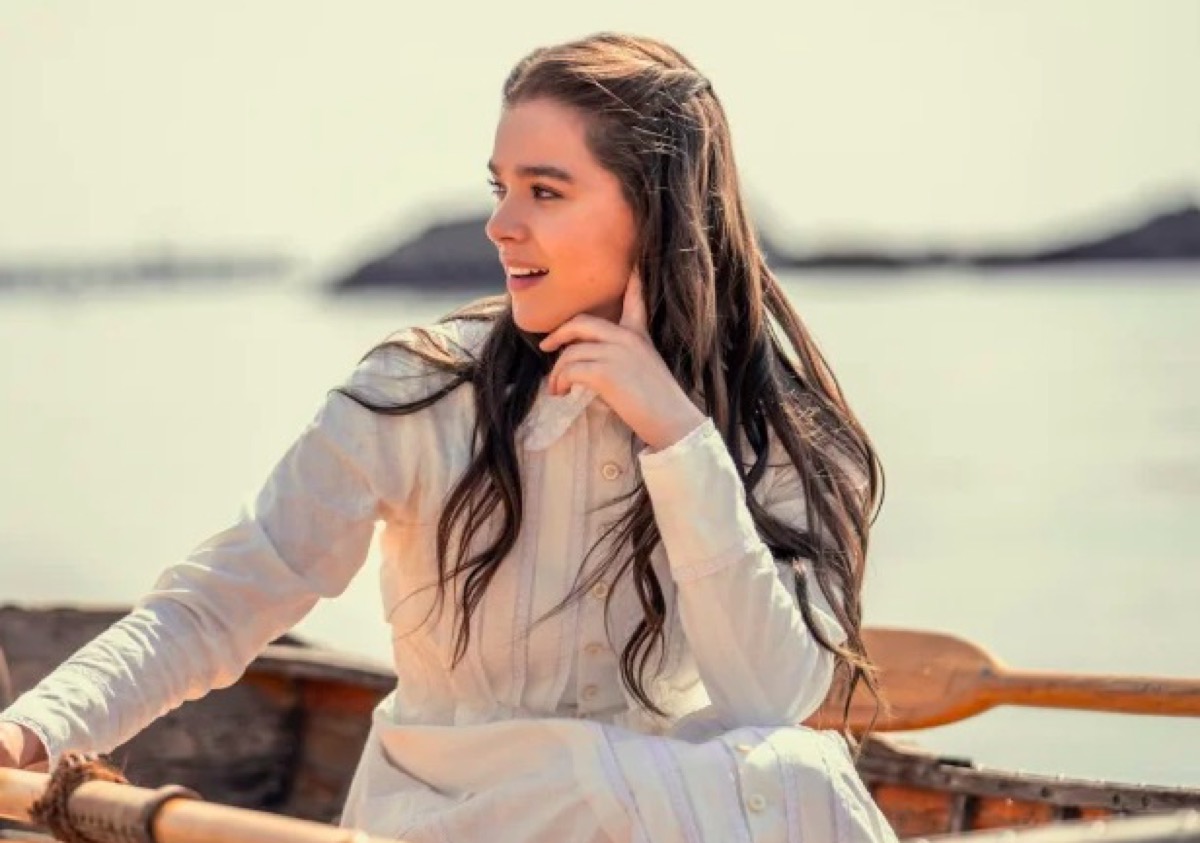In the Final Episode of Dickinson, Emily Says Yes to a Poet’s Dress
The series finale plays with the legend of the white-clad American poet.


The epilogue of Apple TV+’s Dickinson has wrapped Emily (Hailee Steinfeld) in a uniform fit for a poet.
Created by Alena Smith, the coming-of-age story has given the American author a perfect sendoff, tapping into her legend and legacy. The series finale “This was a Poet -” sets up Dickinson’s conventional iconography—made of pristine dresses—in an unconventional portrayal in line with the show’s magical realism and comedic slant.
A conversation with a very dapper Death (Wiz Khalifa) in the episode’s intro establishes the importance of the right outfit to be one’s true self. Counterbalancing Emily’s vibrant, internal world, the young poet needs a blank canvas upon which she can build. Seamlessly, the lore of her immaculate workwear is incorporated into the show in time for its final bow.
Smith’s clever, empathetic writing and direction are able to turn a seemingly trivial, frivolous matter into something that demands the audience’s attention, providing an explanation for the poet’s preference for simple, white items of clothing. Fully committed to leaving her corset days behind, the protagonist wants to craft an innovative dress she can sew and put on herself.
“We should be able to get in and out our clothes by ourselves. It’s a baseline requirement for being an adult,” a frustrated Emily tells her sister, Lavinia (Anna Baryshnikov), who has been summoned to unbutton her impossibly complicated dress.
In a few lines, Emily’s fashion emergency becomes a quest for independence. The poet isn’t just gasping for air in her tight corset; she’s hungry for that agency she has been denied her whole life.
According to scholars, Dickinson is believed to have started wearing primarily white in her thirties, and the series takes this fashion evolution into account. With the help of skillful seamstress and no-nonsense confidante Betty (Amanda Warren), Emily embarks on a mission to find the most appropriate outfit to live, breathe, and write in as a self-sufficient woman artist.
She imagines her new dress as “made of light” and “pure shapelessness,” romanticizing the ‘fit and desperately needing Betty’s matter-of-fact advice to ground it in reality. Yet, Emily also wants to craft the dress herself, despite Betty’s multiple offers. Doing the work alone is crucial for the protagonist’s self-determination.

A penchant for white dresses has been pinned to the poet as a result of contemporary accounts. Writer Thomas Wentworth Higginson—pivotal in publishing Emily’s poems posthumously—was struck by her soft voice and her exquisite, pristine dress during their first encounter. Similarly, writer and editor Mabel Loomis Todd wrote that Dickinson would dress “wholly in white.”
It is unclear if these descriptions reflect Emily’s reality in full. However, the only garment known to have belonged to the poet and preserved to this day is, indeed, white. Part of the collection of the Amherst Historical Society, this is an unpretentious, corset-less house dress known as “wrapper,” normally worn to do house chores. Practical, comfortable, and easy to clean, the dress also sports a single pocket on the right side, big enough to contain a pencil and scraps of paper.
In the words of Wentworth Higginson, Emily’s white is associated with plainness, mirroring her relatively uneventful life in her family house. Adding to the canon, Smith manages to flip the dismissive narrative built around the domestic poet. On the show, a colorless, unstructured piece of fabric becomes tangible proof of Emily’s forward-thinking attitude—the same pioneering approach viewers have had a taste of throughout this third season.
“A new kind of dress for a new kind of poetry,” Emily declares once set on a design.
Lightweight and breathable, with buttons on the front (and pockets!), the dress makes its long-anticipated debut in the final moments of the episode. Emily doesn’t get to meet Colonel Wentworth Higginson (Gabriel Ebert) on this occasion, nor does she involve her family in what is, by necessity, a solitary task.
It is only fitting that Dickinson would give viewers the very first glimpse of the white dress in a fantasy sequence. A montage zeroes in on Steinfeld’s character in her bedroom, dressed in an array of colors as the seasons change. Later on, Emily fixes her gaze on a maritime painting, and she imagines roaming on a beach together with her dog, Carlo, when she hears the call of the mermaids.
The scene is the inspiration behind her poem, “I started Early – Took my Dog,” where Dickinson muses upon getting out at sea—not lost, but somehow found. As the series’ Emily steadily rows towards the horizon, she is wearing the dress. More than a mere garment, the wrapper is also a proxy for her art: quietly revolutionary, a new land to inhabit and cherish until her very last days and, for us lucky readers and viewers, well beyond.
(images: Apple TV+)
Want more stories like this? Become a subscriber and support the site!
—The Mary Sue has a strict comment policy that forbids, but is not limited to, personal insults toward anyone, hate speech, and trolling.—
Have a tip we should know? [email protected]
